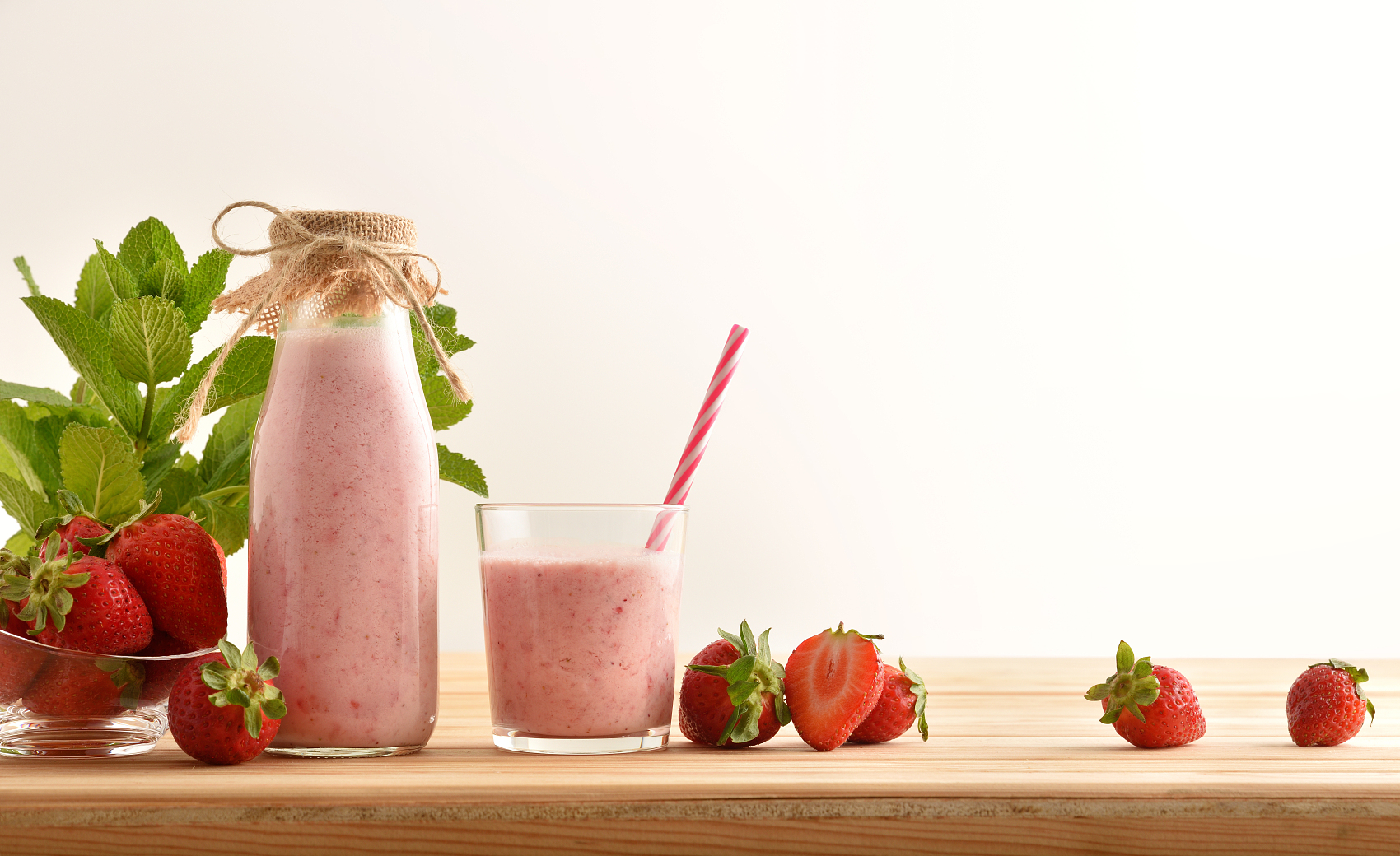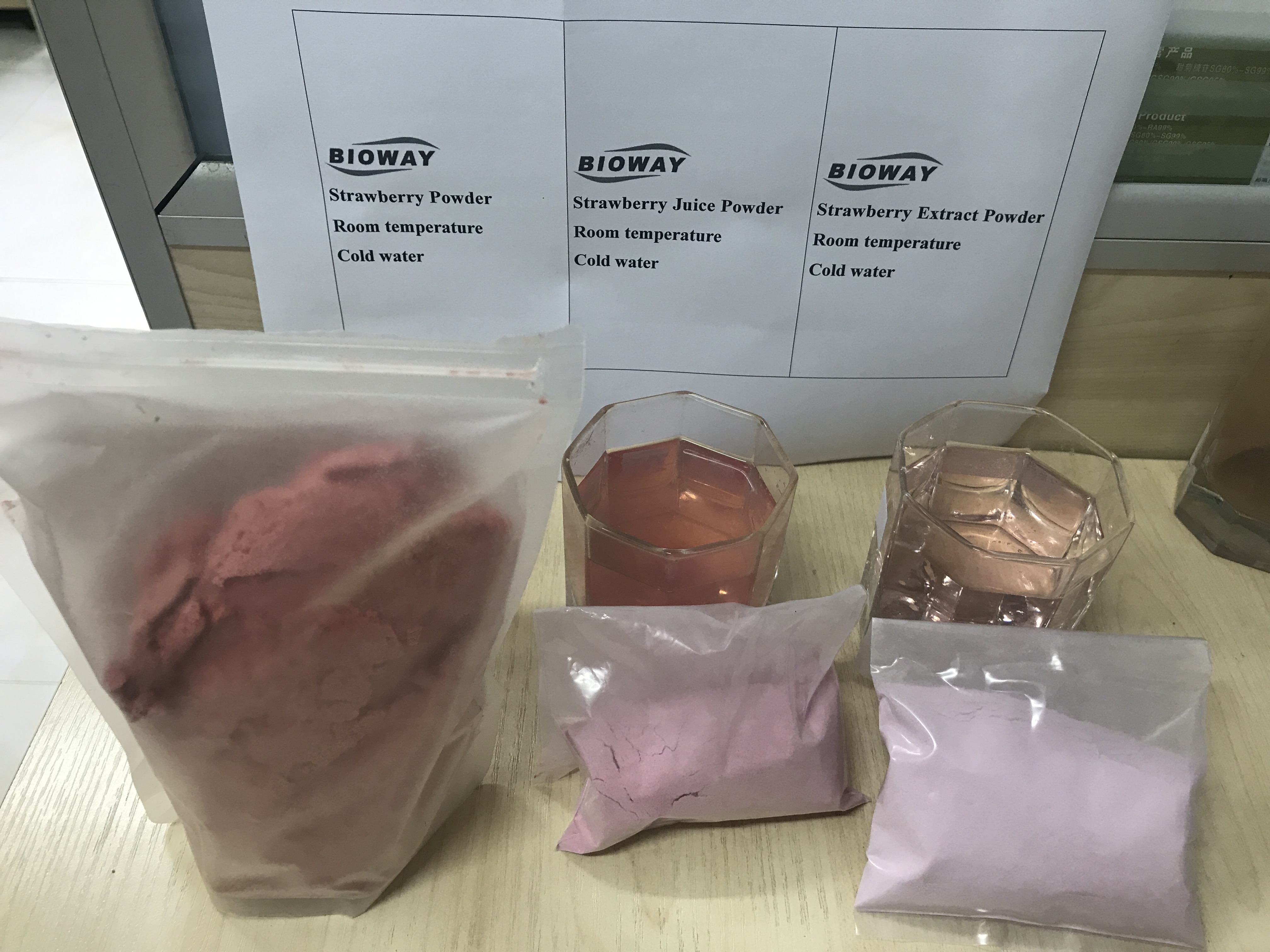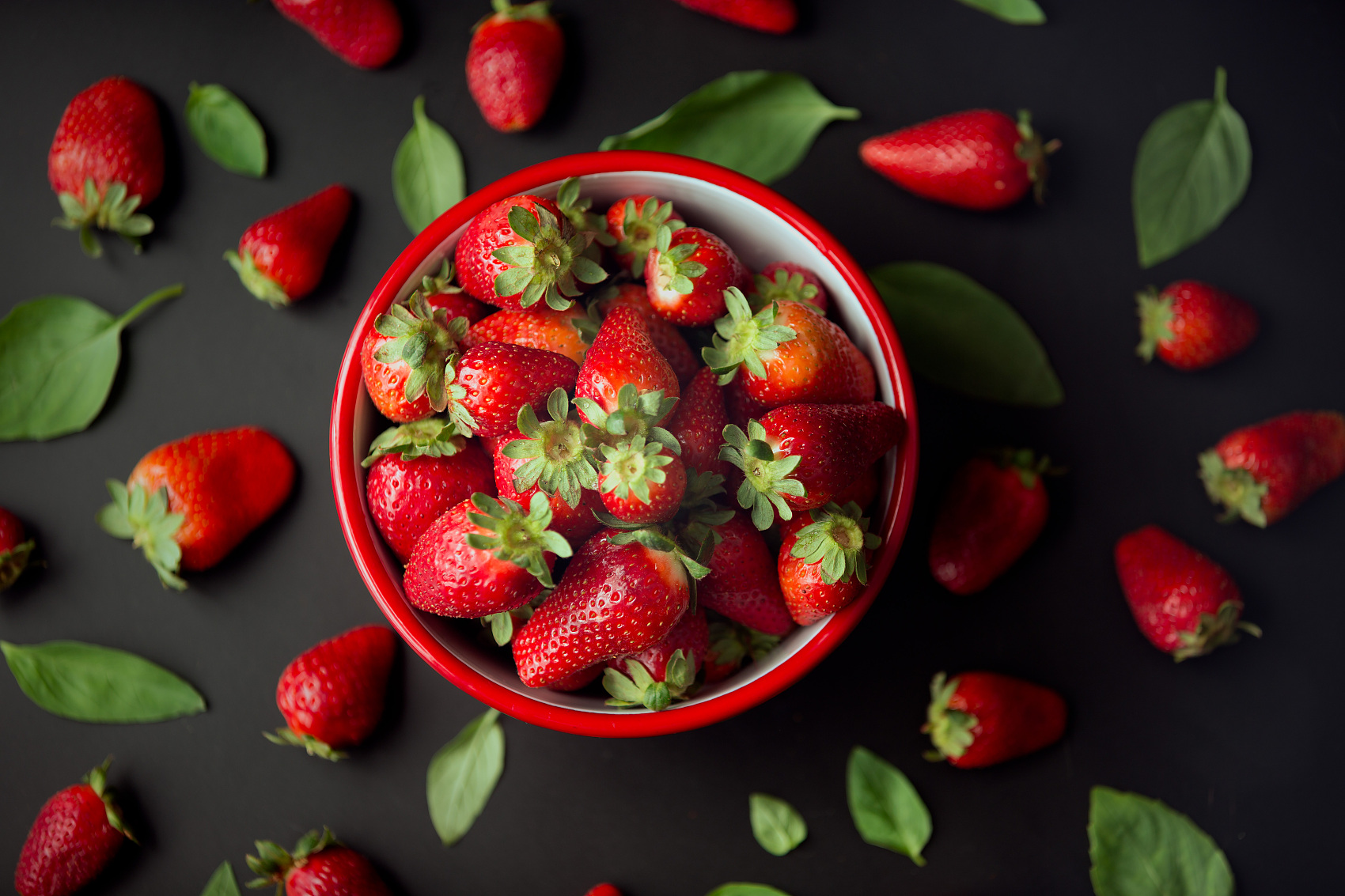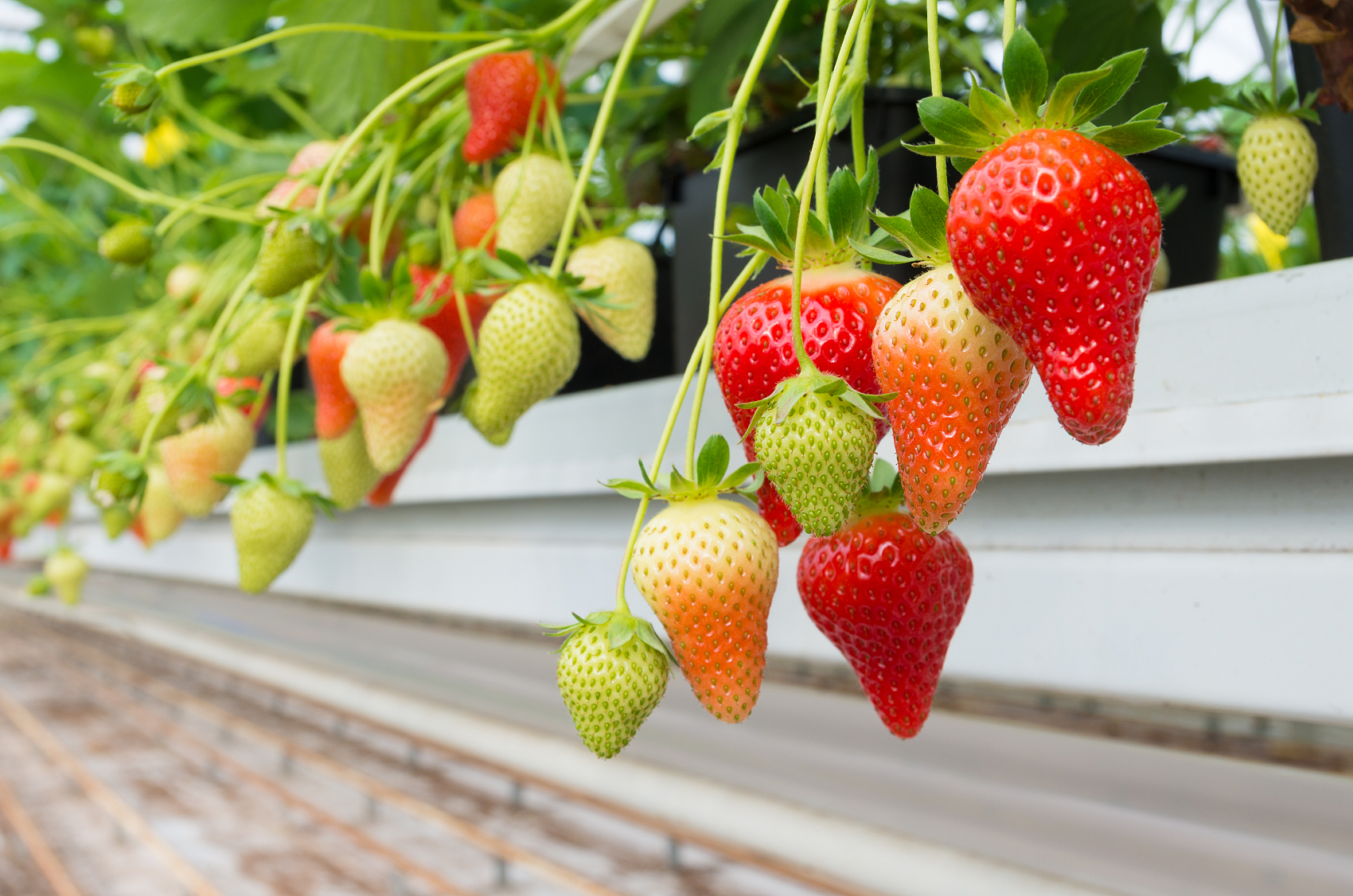Strawberries are not just delectable fruits but also come in different forms to enhance our culinary experiences. In this blog post, we will delve into the details of three commonly used strawberry derivatives: strawberry powder, strawberry juice powder, and strawberry extract. We will compare their production processes, color, solubility, application fields, as well as storage cautions. Let's get started!
1. Process:
a. Strawberry Powder: Made by dehydrating ripe strawberries and grinding them into a fine powder form. This preserves the nutritional content and flavor of the fruit while removing moisture.
b. Strawberry Juice Powder: Produced by extracting juice from fresh strawberries, which is then spray-dried to yield a powdered form. This process helps retain the intense flavor and vibrant color.
c. Strawberry Extract: Created by extracting various compounds, flavors, and aromas from strawberries through maceration or distillation. The concentrated extract often comes in liquid form.
2. Color:
a. Strawberry Powder: Typically exhibits hues of light red, pink, or deep red, depending on the strawberry variety used and potential added colorants.
b. Strawberry Juice Powder: Displaying a more vibrant and concentrated red color due to the condensed nature of strawberry juice before the drying process.
c. Strawberry Extract: The color can range from pale pink to deep red, varying based on the specific components present in the extract.
3. Solubility:
a. Strawberry Powder: It has relatively lower solubility due to its particle size and moisture content, necessitating thorough stirring or adequate time to dissolve in liquids.
b. Strawberry Juice Powder: Shows excellent solubility, efficiently dissolving in water to form a concentrated strawberry juice.
c. Strawberry Extract: Solubility depends on the form of the extract; solid strawberry extract powder may have lower solubility compared to liquid extracts that generally dissolve well in liquids.
4. Application Fields:
a. Strawberry Powder: Widely used in baking, smoothies, ice creams, and desserts as a natural flavoring or color additive. It blends well in dry recipes, adding a subtle strawberry taste.
b. Strawberry Juice Powder: Great for making strawberry-flavored beverages, candies, yogurts, and as an ingredient in energy bars or protein shakes.
c. Strawberry Extract: Primarily used in culinary applications, such as baking, confectioneries, beverages, sauces, and dressings. It imparts a concentrated strawberry flavor.
5. Storage Cautions:
a. Strawberry Powder: Store in an airtight container in a cool, dark place to maintain its color, flavor, and nutritional value. Avoid exposure to moisture to prevent clumping.
b. Strawberry Juice Powder: Similar to strawberry powder, it should be kept in a tightly sealed container away from heat and moisture to preserve its vibrant color and flavor.
c. Strawberry Extract: Generally, follow the storage instructions provided by the manufacturer, which may include refrigeration or cool, dark storage to maintain freshness and potency.
Conclusion:
Understanding the differences between strawberry powder, strawberry juice powder, and strawberry extract can significantly enhance your culinary adventures. Whether you're looking to add a burst of strawberry flavor or vibrant color to your recipes, consider the characteristics of each product and how they align with your desired outcome. Remember to store them properly to maintain their freshness and maximize their usage potential. Happy cooking and baking with strawberries in their various forms!
Post time: Jun-20-2023









